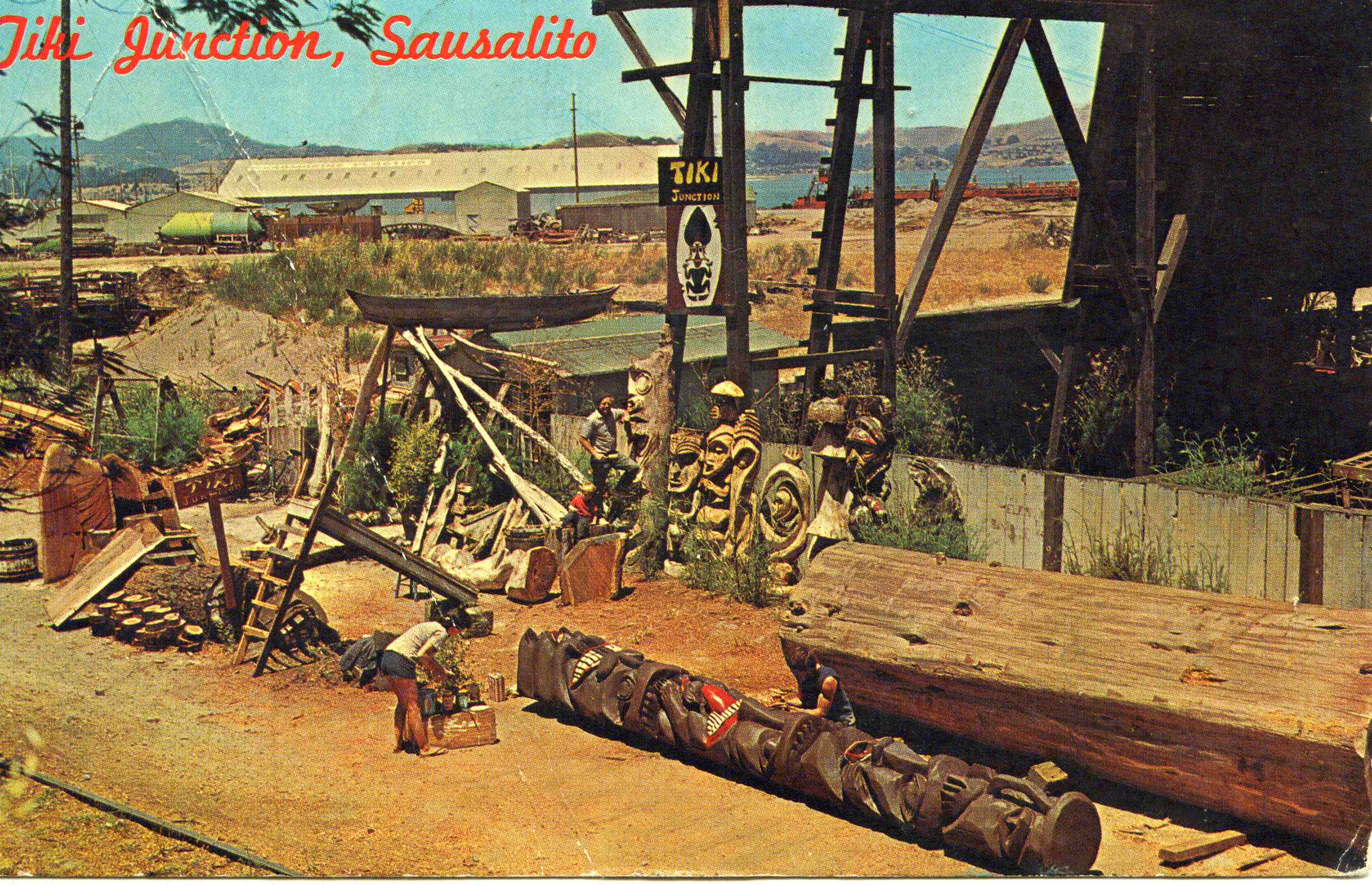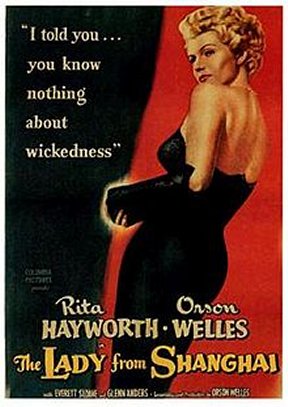South Sea Outpost in Sausalito – Tiki Junction
 Tuesday, March 19, 2013 at 01:16PM
Tuesday, March 19, 2013 at 01:16PM By Ottis Hill
This article has been excerpted from the October 5-11, 1971 edition of MarinScope.
Barney West is a Sausalito institution. The 52 year old former sailor and chef, now wood-carver, established Tiki Junction in 1963. His outdoor studio is a testament to his ambition and his love: The giant carved tiki statues and totem poles, surrounded by South Pacific
foliage, adorn the yard and the ground is covered with a thick mat of wood chips and saw dust, the result of the 300 or so pieces which West and his associates carve per year. The pieces range in size from 3 foot high tikis (a ‘tiki’ is a wood or stone image of a Polynesian supernatural power) to an over 40 foot, 4 ton redwood totem pole West carved for the front of a supermarket at Lake Tahoe. The smaller pieces sell for as little as $75 and the larger sculptures, like the 10 foot high carving of a pair of hands delivering a child, made by John Northstrand, sold for $5000. ‘None of us is getting rich,’ he said,
‘but in a a good season we manage to take in enough money to stay off welfare.’
West learned wood sculpture from the natives of the Marquesan Islands in the South Pacific. While serving with the merchant marines during WW II, West’s ship was torpedoed and he swam to a nearby island. He was welcomed by the friendly natives, and lived with them for six months until he was retrieved by a copra boat which came to the islands every six months to coconut oil. ‘I could have been eaten . . . cannibalism was still going on,’ he said, ‘but these people were very good to me, they took me in and treated me like I was one of them.’
Because the Japanese were approaching, the missionaries had fled the area leaving the natives free to return to their old style of life without the harsh morality taught by the Christians: ‘The natives were incredibly happy; the children lived with anyone they felt comfortable with after they were 4 or 5 years old. The island was a beautiful place for a child to grow up on.’
Some ten years later, West began to carve statues similar to the ones he had seen on the islands. He has used redwood almost exclusively for his sculptures because it is the most resistent to insects and disease and also for the beautiful color and grain of the wood. “Some of the trees I’ve carved are more than 1000 years old,” he said. “It almost makes you sad. But then I didn’t cut them down and I only take rejects the sawmills don’t want or donations from local tree surgeons.”
West has carved many of the statues which surround Trader Vic’s Restaurants and has sent pieces all over the United States. During the last few years, he has diversified into more “free-forms” in his approach and at the present time he has an abstract piece on display at Swanson’s Art Gallery in San Francisco. “In the future I’d like to do more abstracts and maybe a female torso.”
His tools are simple - - a chain saw, a few chisels and a sander. And with these tools he can make almost anything from cigar store Indians to twenty foot high figures dressed in flowing robes.
West began carving wood figures in the middle fifties and settled in Sausalito in 1958. Before setting up Tiki Junction he whittled his trees in the “bow of the old Lassen” at the
foot of Johnson Street. His indoor work area at Tiki Junction was the “crews quarters” on a sailing ship named the “Echo” which was pulled up on the mud and left to rot in the early 1930’s. Not far away sits deteriorating remains of another sailing vessel, the “Galilee” which made mail run from San Francisco to Tahiti around the turn of the century.
The atmosphere of Tiki Junction is a pleasant cross of two worlds; it is where primitive art is formed with an electric chain saw and where Tiki Gods glare menacingly at you while sounds of a Bach fugue float in the air from a radio blaring in the cabin of a grounded sailing ship. And then is West himself with his bushy mustache and black seaman’s cap, speaking of the islands with one breath of the world which surrounds him the next.
“The missionaries used to burn the Tiki statues; they were the most destructive thing that ever happened to the islands. They were hell bent to make the natives wear clothes. . . to make them hide their animalness. Maybe that’s why man is almost merciless in the slaughter of animals. He must fear that part of himself.’’
Tiki Junction was so famous, it even had its own postards.
Photo courtesy of Sausalito Historical Society



